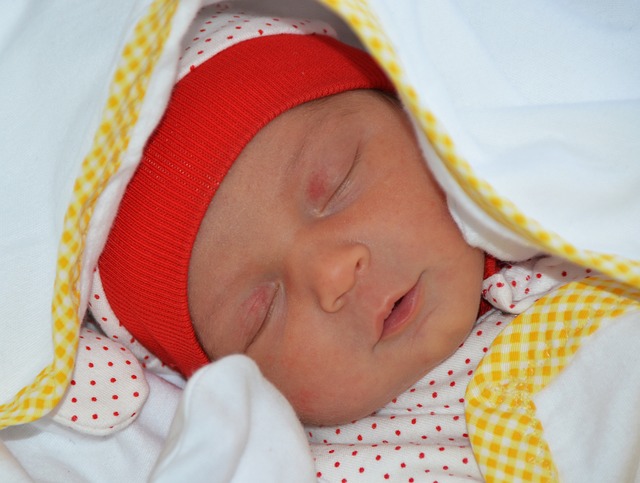- How to Prevent Sudden Infant Death Syndrome (SIDS)
- Understanding the Risks of SIDS
- Safe Sleeping Environment
- Room Sharing Without Bed Sharing
- Avoid Smoking and Smoke Exposure
- Breastfeeding and Pacifier Use
- Maintaining a Comfortable Sleep Temperature
- Importance of Immunization
- Maintaining a Comfortable Sleep Temperature
- Conclusion
How to Prevent Sudden Infant Death Syndrome (SIDS)
Sudden Infant Death Syndrome (SIDS), also known as crib death, is the sudden and unexplained death of a healthy infant, usually during sleep, under the age of one year. Understanding how to prevent SIDS is crucial for every parent or caregiver. How to prevent Sudden Infant Death Syndrome (SIDS) is one of the most frequently searched questions by new parents, reflecting the importance of reducing this risk. While SIDS cannot be completely prevented, several strategies can significantly lower the chances of this tragic occurrence.
Understanding the Risks of SIDS
SIDS remains one of the leading causes of death for infants between one month and one year, with peak incidents occurring between the second and fourth months of life. Research has identified several factors contributing to an infant’s vulnerability, including brain abnormalities, premature birth, low birth weight, and environmental triggers such as sleeping position and the sleep environment.
Safe Sleeping Environment
One of the most effective ways to prevent SIDS is by creating a safe sleep environment for your baby. Always place your baby on their back to sleep during naps and at night. Studies show that infants placed to sleep on their stomachs or sides are at a higher risk of suffocation because their airways can become obstructed by bedding or soft surfaces. It’s essential to use a firm mattress with a fitted sheet and avoid placing pillows, blankets, toys, or crib bumpers in the baby’s sleep area. Keep your baby’s sleep area free of any loose bedding that could potentially cause suffocation.
Room Sharing Without Bed Sharing
The American Academy of Pediatrics recommends room sharing without bed sharing for the first six months of your baby’s life. Having your baby sleep in the same room but on a separate sleep surface, such as a crib or bassinet, can reduce the risk of SIDS by as much as 50%. This allows parents to monitor their baby’s breathing patterns and respond quickly if necessary, while minimizing the risks associated with co-sleeping, such as suffocation or strangulation.
Avoid Smoking and Smoke Exposure
Smoking during pregnancy and after birth is one of the most significant risk factors for SIDS. Studies show that babies born to mothers who smoked during pregnancy are more likely to die from SIDS than those born to non-smokers. Secondhand smoke exposure after birth also increases the chances of SIDS. To minimize risk, parents should avoid smoking and ensure that the baby’s environment is free of smoke.
Breastfeeding and Pacifier Use
Breastfeeding has been associated with a reduced risk of SIDS. Experts believe that breastfed babies may be less likely to develop infections, which can increase the risk of SIDS. Additionally, offering a pacifier at nap time and bedtime has been shown to reduce the risk of SIDS. It’s important to note that if you’re breastfeeding, you should introduce the pacifier only after your baby is one month old to avoid interfering with breastfeeding routines.
Maintaining a Comfortable Sleep Temperature
Overheating is another risk factor for SIDS. Ensure that the baby’s room is at a comfortable temperature, typically between 16°C and 20°C, and avoid overdressing the baby or using heavy blankets. A lightweight, breathable sleep sack is a safe option for keeping your baby warm during sleep.
Importance of Immunization
Keeping your baby up-to-date with vaccinations is another important step in reducing the risk of SIDS. Vaccinated babies have been found to be less likely to die from SIDS. Immunizations help protect against infections that could trigger SIDS in vulnerable infants.
Conclusion
Although SIDS remains a heartbreaking and often mysterious condition, by following these simple, evidence-based practices, you can significantly reduce your baby’s risk. A combination of a safe sleeping environment, avoiding smoke exposure, breastfeeding, and maintaining regular immunizations can go a long way in keeping your baby safe.
The following post may interest you
Respiratory Syncytial Virus (RSV) Key Facts and Prevention
Sources
Sudden infant death syndrome prevention:
https://link.springer.com/article/10.1186/s12887-021-02536-z
Sudden Infant Death Syndrome: Risk Factors and Newer Risk Reduction Strategies:
https://www.ncbi.nlm.nih.gov/pmc/articles/PMC10351748
Sudden infant death syndrome:
https://www.cmaj.ca/content/174/13/1861.short
Breastfeeding and Reduced Risk of Sudden Infant Death Syndrome: A Meta-analysis:
Effectiveness of Educational Program on Mothers’ Knowledge and Practices for The Prevention of Sudden Infant Death Syndrome:
https://ejnsr.journals.ekb.eg/article_278177.html
PREVENTION OF SUDDENT INFANT DEATH SYNDROME : EHEALTH INTERVENTION DESIGN TO SUPPORT THE CURRENT HEALTH PROMOTION AND EDUCATION ABOUT SIDS:
https://essay.utwente.nl/75095
Sudden unexpected death in infancy: aetiology, pathophysiology, epidemiology and prevention in 2015:

